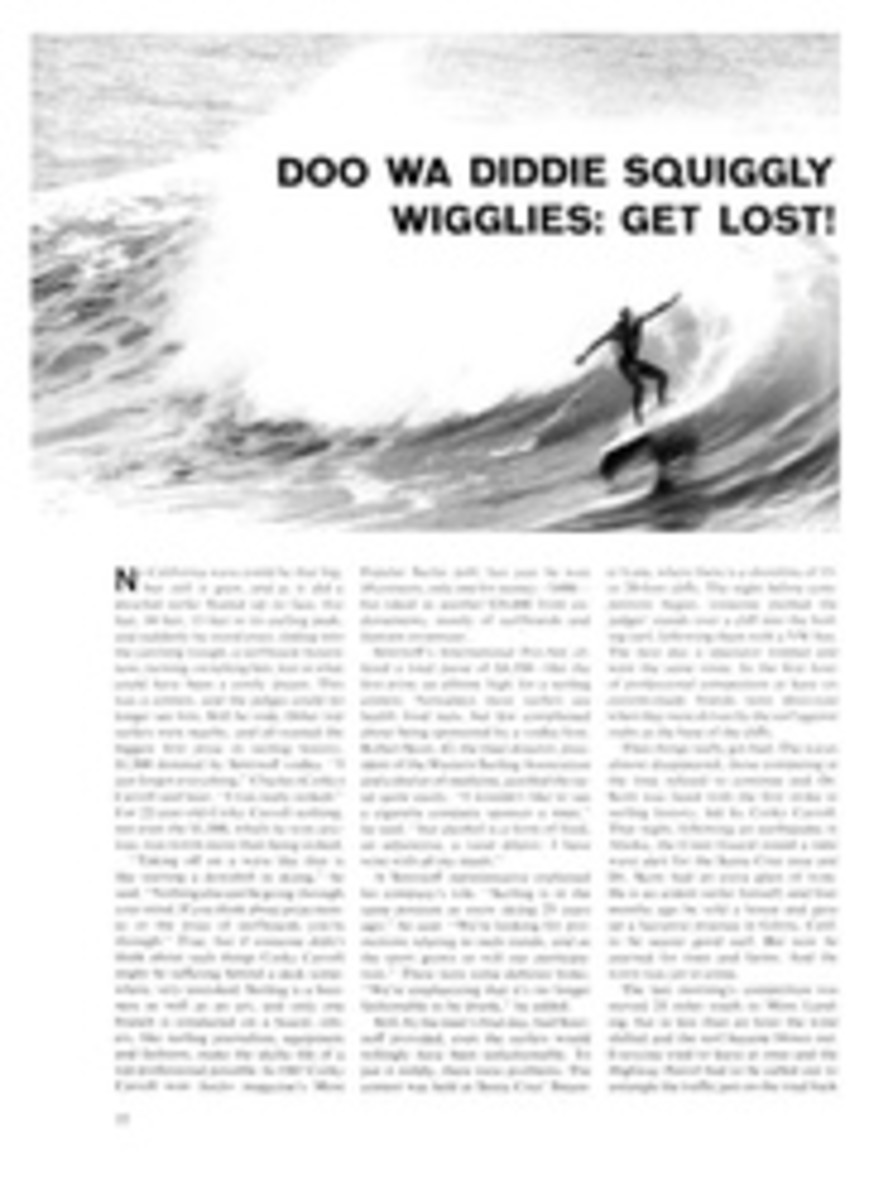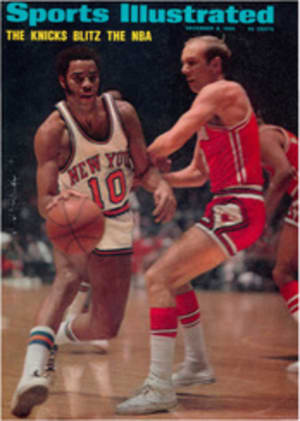
Hooded Horses Cast Long Shadows in the Dawn
The trainer, weather-worn, cautious and speaking in the staccato rhythm of his native tongue, gave his final instructions to the small, dark jockey in the red and white silks: "Pegate a los punteros y no hagas tu movimiento hasta la recta final. Aquí es muy larga."
Nowadays, thanks to Baeza, Ycaza, Cordero, Velasquez, et al., Spanish is as much a part of the scene at Aqueduct and other major racetracks in the U.S. as the daily scratch sheet. In 1937, however, it was heard about as often as Russian or perhaps Rumanian. The man who spoke it this day was Jose Cuevas, and the rider he spoke to was Miguel Villena, both of Chile. The red-and-white racing silks worn by Miguel were those of one Clarence Shockley of Los Angeles, a quiet, diffident, red-haired gentleman who had journeyed to Chile and brought back several racehorses, two of whom were named Sahri II and Caballero II.
It was June 25, 1937, and the five just mentioned—Shockley, Cuevas, Villena and the two fast and fit horses—were about to ambush the bookmakers at Aqueduct for something like half a million dollars in tax-free American currency.
The groundwork for this coup was laid earlier that spring when Shockley checked into a barn at Belmont Park, roughly 10 miles from the old Aqueduct, with his new horses. At that time South American horses were considered as foreign in this country as racing on grass. Along with the alien horses came two grooms, equally foreign, who doubled as exercise riders. The trainer, Cuevas, and the rider, Villena, did not appear until later. The grooms, lonely and mute because of language problems in a strange country, managed, nevertheless, to discover a cigar store on nearby Hempstead Turnpike, which was, marvel of marvels, run by a pair of horse-loving Cubans who also spoke Spanish. In short order they were all friends.
Meanwhile back at the track, Sahri II and Caballero II were winning themselves a curious nickname, The Ku Klux Horses. The first few times Shockley sent them out on the training track to canter they wore unusual equipment: hoods that completely masked their heads except for eye slits and half sheets or blankets that were draped over their backs. It gave them a chilling appearance in the half light and gray mood of the dawn training hours. The hoods and half sheets were borrowed from an English training method, designed to make horses fit without strenuous workouts. The theory was that perspiration and slow gallops would do it and not tip off the experts that a horse was ready.
The clockers at Belmont, men who lived by the numbers on the stopwatch, paid no attention to the two Chilean horses after their opening jokes about the Ku Kluxers. In the second week of June New York racing moved from Belmont to Aqueduct. That meant the clockers were spending their afternoons far removed from the Belmont training track, where the hooded wonders were still working out. There was, therefore, no one to notice when on certain of those afternoons Sahri II and Caballero II, with the two Chilean exercise boys up, put in some swift workouts.
There was a good deal of conversation on some of those June evenings between the Chileans and the Cubans in the cigar store. However, it was all in Spanish, so nobody knew what it was about, and nobody thought anything of the matter when the Cubans sold the store for a reported price of $10,000.
In 1937 all betting at the New York tracks was with bookmakers, about 100 of whom—legalized by the state—operated on stools with odds chalked on slates. Most of them were in the grandstand, but some were in the clubhouse. It was a more personal way of betting than with the computerized pari-mutuels of today. Best of all, if you bet a horse at 50 to 1 that was the price you got, even if he went down to 8 to 1.
On June 25th, 1937 Sahri II was entered in the first race at Aqueduct, a claiming race for $2,000 platers. The purse was $1,000, with $700 going to the winner. Caballero II was dropped into the fourth race, an event for $4,000 claimers.
The handicappers in the racing papers were not impressed with either Sahri II or Caballero II. The unvarying comment was: "Nothing to recommend this one."
But bookmakers deal in money, which is a more concrete thing than opinions on paper, and so they are by nature cautious. Most of them employed a private clocker whose job it was to spot any swift-working "good things." A clocker named George Sharpe, also known as Mountain, was on the payroll of several books who solicited his opinion of Sahri II.
"She isn't ready," Mountain flatly announced.
In the betting rings, both grandstand and clubhouse, the books chalked up their opening line. Sahri II was listed at 30 to 1. No one seemed interested. The price went up to 50 to 1. Headin Home and Speed were the early favorites in the betting.
Then it happened, something like the Johnstown flood. The two Cubans from the cigar store appeared in the grandstand ring. Shockley and a friend were in the clubhouse. They all were betting as fast as the books could take the action, moving from slate to slate.
The price fell fast. To 40 to 1, then 30, to 20 and 10 to 1. Some of the books, especially those who employed Clocker Mountain, held the line at 20 for a while. They all but got knocked off their stools. The general public, of course, had moved in on the heels of the Shockley group.
The closing price was 8 to 1. The only reason the odds stood still was that the horses were at the post. Villena remembered his instructions from the trainer: "Stay close to the leaders, but don't make your move until well into the stretch. It is a long one here." It was, indeed. At that time the Aqueduct stretch—the track has since been rebuilt—was a bit more than three furlongs, the longest in the country.
The race itself fell together like a Spanish omelet for the Chilean contingent. Villena snugged his horse along in second place until well into the stretch. He then gunned Sahri II into the lead and flashed past the finish a comfortable length in front.
The bookmakers had been slaughtered. The exact amount was never divulged, but it was high. The two Cubans had bet their $10,000 at odds ranging from 50 to 1 down to 10 to 1. They must have won about $250,000. Shockley, an independent soul who bet his own money, won at least that much.
In retrospect, it is amazing that nobody claimed Sahri II for that ridiculous price of $2,000. Hirsch Jacobs reportedly wanted to but got there too late. Hirsch was not too late for Caballero II, whom he haltered from the fourth race for $4,000.
After their burning in the first race the bookmakers exhibited their normal caution in the fourth event. They opened Caballero II at 5 to 1. The Cubans had left to go off and count their money. Shockley was strolling through the clubhouse accepting congratulations.
Caballero II receded to 8 to 1, and Shockley began to bet a little. Just rooting interest money. The fourth was a six-furlong dash. Caballero, again with Villena up, dropped way back. A horse named Isaiah, with a young jockey named Eddie Arcaro up, had the lead in the stretch.
Caballero II came with a cometlike rush down the middle of the track. Right on the line the two bobbing heads were even. The camera could not split them. It was a dead heat. Under the rules of book-making the bets were split, meaning a payoff of 3½ to 1 on Caballero II. Not 50 to 1, of course, but better than losing.
Both Sahri II and Caballero II went on to a fair measure of fame on the American turf. Neither raced in a claimer again. Sahri II won an edition of the prestigious Hawthorne Gold Cup and the Hannah Dustin Handicap at Suffolk Downs in Boston. Jacobs won renewals of the Aqueduct and Excelsior Handicaps in New York with Caballero II.
Nobody ever saw the Cubans again. They disappeared with a lot of bookmaker money and reportedly went home to Havana. The clocker. Mountain, died a few years later. The racetrack legend was that he had buried a lot of money in his backyard. Mountain had lived alone. For weeks after his death a number of greedy racetrackers were busy digging up Mountain's lawn, but nobody unearthed a dime.

